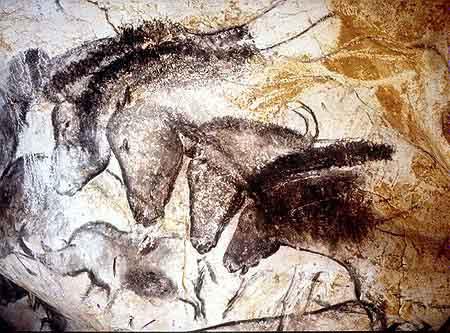Cave of Forgotten Dreams, like all Werner Herzog films, is in some measure about Werner Herzog. In this case, the old boy shows up often in front of the camera, and rather than choose a distinguished narrator like Morgan Freeman or Helen Mirren to convey his awe, we are treated to his own wizened, accented croak. And whether in spite of this or because of it, the film is a triumph.
It's probably true of all great filmmakers that their movies are, in some measure, about themselves (Scorsese springs to mind). But Herzog has a knack for intertwining his subject matter with his own idiosyncratic vision – one of the many films about him is, after all, entitled I Am My Films. Herzog and his camera crews have a way of becoming part of the story, enhancing the viewing with sometimes apocryphal tales of the arduous shoot.
Herzog's methods have become legendary, whether it's trekking to the rim of an active volcano (La Soufrière), schlepping his entire crew up to the source waters of the Amazon (Aguirre, the Wrath of God), hypnotizing his onscreen actors (Heart of Glass), going to extreme lengths to mollify a disgruntled all-dwarf cast (Even Dwarves Started Small), going to extreme lengths to stare down a prima donna star (Aguirre, again), or most famously, literally – and disastrously – dragging a ship over a mountain, just like his megalomaniac title character (Fitzcarraldo),
After that glorious fiasco, it's a wonder anyone gives him financing anymore, but we're all the richer that someone did. And Herzog's reputation has recovered sufficiently (Oscar noms always help) that the History Channel and the French government thought it would be a good idea for him to be granted filming priveleges inside the amazing Chauvet Cave, site of the world's oldest known cave paintings.
Herzog's sense of wonder at the "abyss of time" represented by these 32,000-year-old images is palpable. Though the scientists and art historians he interviews have interesting things to say, the paintings themselves are the true star of the film. With their delicate, sweeping lines, subtle shading and the detailed, emotive empathy with the animals depicted, any contemporary artist would be proud to have created such images. And the evocative choral score by Ernst Reijseger masterfully reflects the majesty of the site.
But Herzog the filmmaker also notices that the cave painter anticpated the use of motion in painting by, for instance, depicting an ox with eight legs. This recalls Duchamp's 1911 "Sad Young Man On a Train" and other painterly reactions to the birth of cinema. Herzog makes other explicit connections to moviemaking, as when he compares the artist's torchlit figure painting to a clip of Fred Astaire dancing with his own projected shadows. One interviewed archaeologist points directly at the camera lens to make the point that the Chauvet painter basically invented the medium of communicating with a future audience - "just as that camera does."
To Herzog, this stunning artwork represents "the dawn of the modern human soul," and he asks his scientists what is perhaps the central question in all his work: "What is human-ness?" And from exploring the world of the deaf and blind to the solitary work of a grizzly bear afficionado, this has concerned Herzog throughout his career. In Cave of Forgotten Dreams, after years of pointing his camera at extraordinary sights, he's found a subject that both illuminates and deepens this mystery.


I'm a latecomer to the Herzog fanship, but I did go to Cave of Forgotten Dreams recently. Like Terence Malick's Tree of Life, I think a lot of the effect is subliminal and works on you afterwards.
ReplyDeleteOne of my college friends is married to Herzog's producer, which is neither here nor there, but kind of cool all the same.
That is cool ... I got to see him in person once at the Pacific Film Archive in berkeley. It was the premiere of Errol Morris' first film, and Herzog lost a bet with Morris about whether it would be completed. The event is memorialized in the documentary "Werner Herzog Eats His Shoe."
ReplyDeleteI think I really became intrigued with him when a friend posted a link to a clip in which he actually gets shot while talking about a project on the streets of L.A., and then proceeds blithely on, saying in effect, 'these things happen'...
ReplyDelete